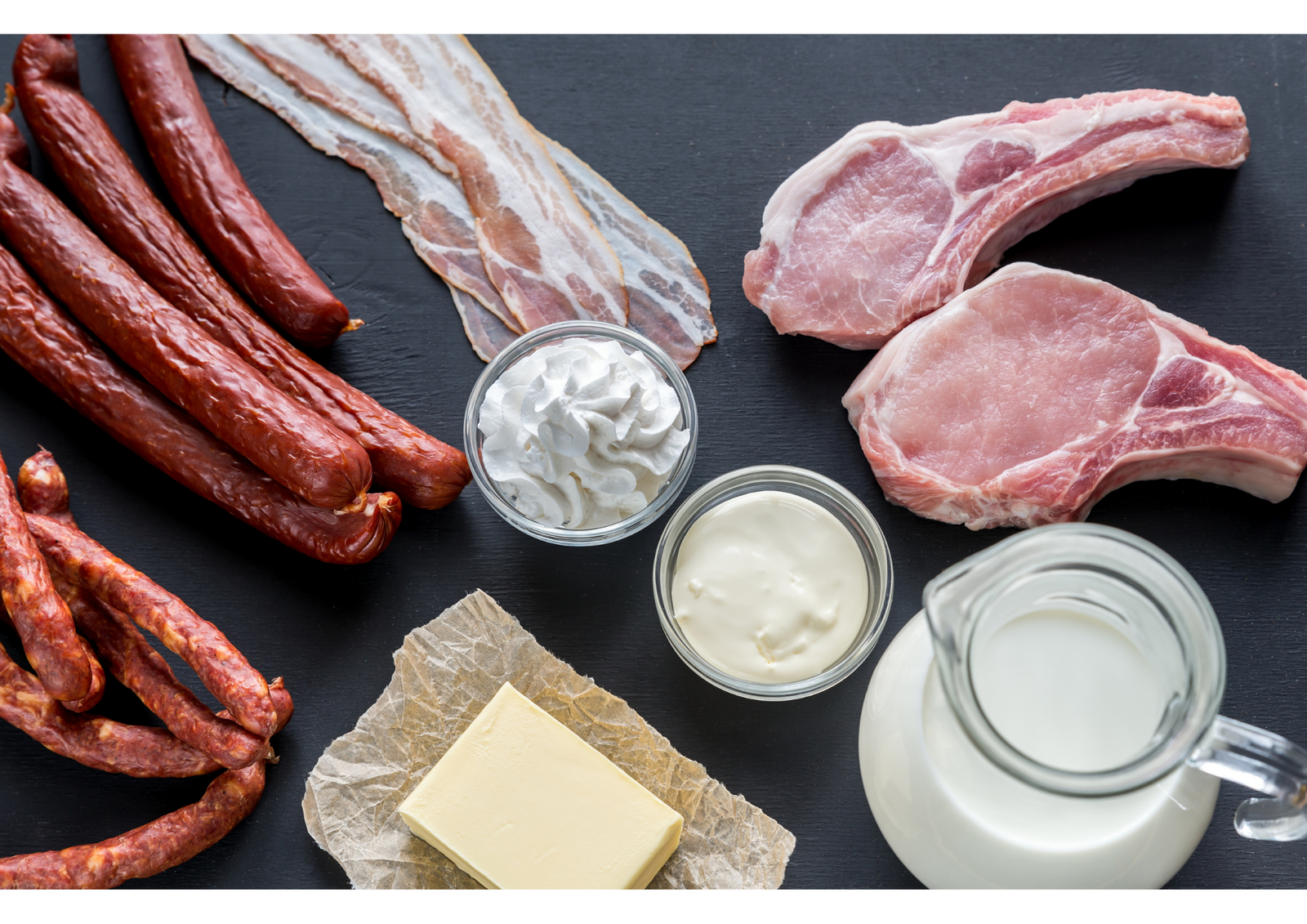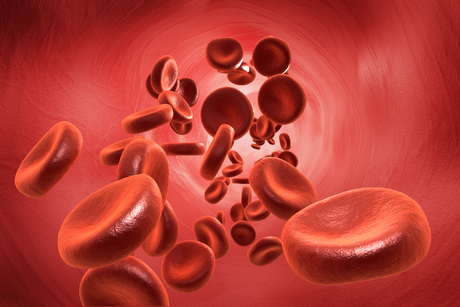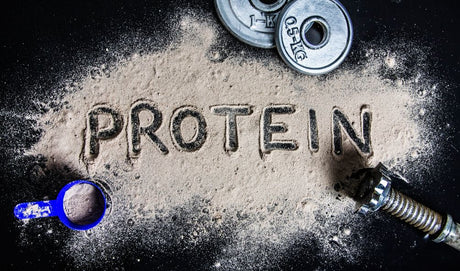Visceral fat is a type of body fat that accumulates within the abdominal cavity and can build up in the arteries. It is located near several vital organs, including the liver, spleen, stomach, and intestines. This type of fat is sometimes referred to as “active fat” because it can actively increase the risk of serious health problems such as heart disease, diabetes, and prediabetes (Patel & Abate, 2013). Not all belly fat is visceral; some is subcutaneous, just under the skin. Visceral fat is not easily visible, but it can be detected with methods such as a body scan or an MRI.
There are several ways to reduce visceral fat levels. These include:
Diet: Eating a healthy diet rich in protein, fibre, and healthy fats, while reducing the intake of carbohydrates and added sugars can help reduce visceral fat. Processed food items must be avoided as they are rich in trans fat and can accumulate in the body as visceral fat. Drinking juice or soda with high calories should also be avoided.
Exercise: Regular physical activity, such as swimming, jogging, and brisk walking every day for a minimum of half an hour is advised to reduce visceral fat. Aerobic exercise can also help reduce visceral fat levels.
Sleep: Getting enough sleep is important for reducing visceral fat levels . Insufficient sleep increases abdominal fat, especially the harmful visceral fat, and recovery sleep does not reverse this effect.
Stress management: Managing stress levels can help reduce the production of cortisol. This hormone triggers the storage of more visceral fat.
Dietary strategies you can use to help reduce visceral fat:
Reducing carbohydrate intake. A study investigated the effects of a low carbohydrate diet on glucose and lipid metabolism, especially on visceral fat accumulation, in obese subjects with type 2 diabetes mellitus (Sasakabe, Haimoto, Umegaki, & Wakai, 2015).
The study participants were randomly assigned to either a low calorie/low carbohydrate diet (1000 kcal per day, 25% protein, 40% carbohydrate, and 35% fat) or a low calorie/high carbohydrate diet (1000 kcal per day, 25% protein, 65% carbohydrate, and 10% fat). They followed their assigned diets for four weeks.
The results showed that both groups had similar decreases in body weight and serum glucose levels. However, fasting serum insulin levels were reduced more in the low carbohydrate diet group (-30%) than in the high carbohydrate diet group (-10%). High-density lipoprotein-cholesterol (HDL-C) increased in the low-carbohydrate diet group (+15%) but not in the high-carbohydrate diet group.
Most interestingly, there was a more significant decrease in visceral fat area in the low carbohydrate diet group (-40 cm²) than in the high carbohydrate diet group (-10 cm²). The ratio of visceral fat area to subcutaneous fat area also decreased significantly in the low carbohydrate diet group (from 0.69 to 0.47) but did not change in the high carbohydrate diet group (from 0.70 to 0.68).
In conclusion, the study suggests that a low-calorie/low-carbohydrate diet may be more effective for reducing visceral fat, improving insulin sensitivity, and increasing HDL-C levels than a low-calorie/high-carbohydrate diet in obese subjects with type 2 diabetes mellitus.
This research is not the only instance demonstrating how dietary modifications can positively influence visceral fat. Numerous other studies, encompassing a diverse range of participants, those engaging in weight maintenance, to those at risk of type 2 diabetes, have also shown similar results (Gower & Goss, 2015) (Goss, et al., 2013) (Volek, et al., 2004).
Carb rich foods include breads, such as tortillas and bagels, rice, pasta, and crackers as well as sugary beverages. If nothing else, switching to only drinking sugar-free drinks is advised.
In addition to managing carbohydrate intake, reducing consumption of processed meats (sausages, bacon, and deli meats) has also been found to significantly influence visceral fat levels (López-Hernández, et al., 2020). Processed meats contain high levels of sodium, preservatives, and saturated fats. Regular consumption of these can lead to inflammation, increased calorie intake, and weight gain, especially in the abdominal area.
Dairy foods in their natural state can be nutritious, however many commercial dairy products are high in added sugars, saturated fats, and calories. Overconsumption can therefore contribute to increased visceral fat accumulation (Trichia, et al., 2019).
By limiting processed meats and certain dairy foods, individuals can mitigate the intake of these detrimental ingredients and promote healthier fat distribution in the body. Adopting a diet rich in whole foods, lean proteins, and plant-based fats can further support this effort, optimizing overall health and reducing the risks associated with excess visceral fat.
Effective Exercise Routines for Targeting Visceral Fat:
You can engage in regular physical activity and maintain a healthy diet to reduce visceral fat. Aerobic activities such as walking, jogging, swimming, biking or hiking are recommended for about 150 minutes or 2 1/2 hours each week. Strength training exercises that work large muscle groups can also help shed body fat.
High-Intensity Interval Training (HIIT) is another effective method to lose visceral fat. For instance, bike sprints involving a comfortable pace for 2 minutes followed by hard sprinting for 15 to 20 seconds can be beneficial. Similarly, treadmill intervals with a 10% incline and speed slightly higher than your typical jog pace can be done.
Exercises like squats and deadlifts are also beneficial as they improve insulin sensitivity and reduce inflammation in the body, aiding in weight loss and loss of visceral fat (Vissers, et al., 2013).
Research has shown that lack of sufficient sleep can lead to an increase in visceral fat.
A study at the Mayo Clinic found that lack of sufficient sleep led to a 9% increase in total abdominal fat area and an 11% increase in abdominal visceral fat compared to control sleep (Clinic, 2022). These results suggest that inadequate sleep is a trigger for visceral fat deposition.
It's important to note that while recovery sleep can decrease calorie intake and weight, visceral fat continues to increase, indicating that catch-up sleep, at least in the short term, does not reverse the visceral fat accumulation.
More than one-third of adults routinely do not get enough sleep due to shift work and smart devices and social networks being used during traditional sleep times. People also tend to eat more during longer waking hours without increasing physical activity.
Stress can play a significant role in the accumulation of visceral fat.
When someone is stressed, their body releases a hormone called cortisol, which increases how much visceral fat a person’s body stores (Jackson, Kirschbaum, & Steptoe, 2017). Therefore, managing stress effectively can help reduce the amount of visceral fat.
Stress management techniques such as meditation, deep breathing, yoga, and other relaxation exercises can help reduce cortisol levels. By reducing stress and subsequently lowering cortisol levels, it may be possible to decrease the amount of visceral fat the body stores.
The management of visceral fat is multifaceted and requires a comprehensive approach. Diet, exercise, sleep quality, and stress management all contribute to its reduction. Among these factors, diet stands out as the most impactful. Consuming a balanced diet rich in lean proteins, fruits, and vegetables can significantly help reduce visceral fat.
Regular physical activity not only helps burn calories but also improves metabolism and regulates hormonal balance, which aids in controlling the accumulation of visceral fat. Sleep quality directly affects the body’s metabolism and hormonal balance, and poor sleep quality has been linked to increased visceral fat accumulation.
Stress management is another important aspect of controlling visceral fat as high stress levels lead to the release of cortisol, a hormone that promotes the storage of visceral fat. Effective stress management techniques such as deep breathing, yoga, and meditation can help maintain a healthy cortisol balance.
In essence, while visceral fat poses significant health risks, it can be effectively managed and reduced through a combination of a healthy diet, regular exercise, good sleep hygiene, and effective stress management. By making these lifestyle changes, individuals can significantly reduce their visceral fat levels, reducing their risk of developing associated health conditions.
Product Spotlight
CarniShred™ combines two forms of L-Carnitine, proven by research to aid in breaking down fats and producing energy. It also includes unique patented ingredients that boost metabolism and create a perfect synergy to help you burn body fat, amplify cellular energy, and recover quicker from exercise-induced muscle damage.
References
Clinic, M. (2022, March 28). Lack of sleep increases unhealthy abdominal fat, study finds. Retrieved from ScienceDaily: www.sciencedaily.com/releases/2022/03/20328165327.htm
Goss, A. M., Goree, L. L., Ellis, A. C., Chandler-Laney, P. C., Casazza, K., Lockhart, M. E., &
Gower, B. A. (2013, Jun). Effects of diet macronutrient composition on body composition and fat distribution during weight maintenance and weight loss. Obesity (Silver Spring), 21(6), 1139-42. doi:10.1002/oby.20191
Gower, B. A., & Goss, A. M. (2015, Jan). A lower-carbohydrate, higher-fat diet reduces abdominal and intermuscular fat and increases insulin sensitivity in adults at risk of type 2 diabetes. J Nutr, 145(1), 177S-83S. doi:10.3945/jn.114.195065
Jackson, S. E., Kirschbaum, C., & Steptoe, A. (2017, Mar). Hair cortisol and adiposity in a population‐based sample of 2,527 men and women aged 54 to 87 years. Obesity, 25(3), 539-544. doi:10.1002/oby.21733
López-Hernández L, Pérez-Ros P, Fargueta M, Elvira L, López-Soler J, Pablos A. Identifying Predictors of the Visceral Fat Index in the Obese and Overweight Population to Manage Obesity: A Randomized Intervention Study. Obes Facts. 2020;13(3):403-414. doi: 10.1159/000507960. Epub 2020 Jun 12. PMID: 32535591; PMCID: PMC7445565.
Patel, P., & Abate, N. (2013, Jun). Body Fat Distribution and Insulin Resistance. Nutrients, 5(6), 2019-2027. doi:10.3390/nu5062019
Sasakabe, T., Haimoto, H., Umegaki, H., & Wakai, K. (2015, May). Association of decrease in carbohydrate intake with reduction in abdominal fat during 3-month moderate low-carbohydrate diet among non-obese Japanese patients with type 2 diabetes. Metabolism, 64(5), 618-25. doi:10.1016/j.metabol.2015.01.012
Trichia E, Imamura F, Brage S, De Lucia Rolfe E, Griffin SJ, Wareham NJ, Forouhi NG. Associations of types of dairy consumption with adiposity: cross-sectional findings from over 12 000 adults in the Fenland Study, UK. Br J Nutr. 2019 Oct 28;122(8):928-935. doi: 10.1017/S0007114519001776. PMID: 31342887; PMCID: PMC6791809.
Vissers, D., Hens, W., Taeymans, J., Baeyens, J.-P., Poortmans, J., & Gaal, L. V. (2013). The Effect of Exercise on Visceral Adipose Tissue in Overweight Adults: A Systematic Review and Meta-Analysis. PLoS One, 8(2), e56415. doi:10.1371/journal.pone.0056415
Volek, J., Sharman, M., Gómez, A., Judelson, D., Rubin, M., Watson, G., . . . Kraemer, W. (2004, Nov 8). Comparison of energy-restricted very low-carbohydrate and low-fat diets on weight loss and body composition in overweight men and women. Nutr Metab (Lond), 1(1). doi:10.1186/1743-7075-1-13











